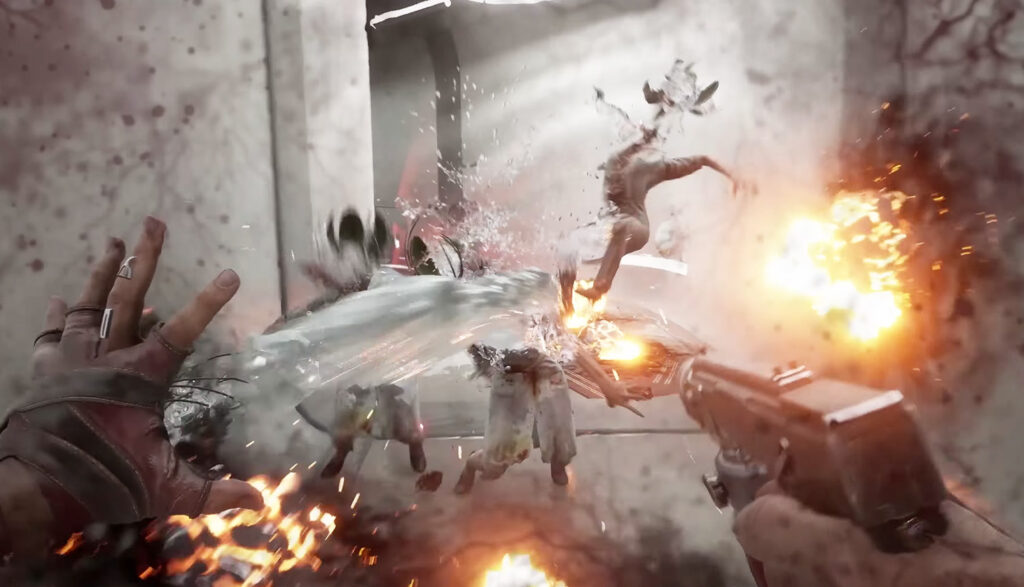
The first-person shooter adventure game Atomic Heart has captured the attention of the gaming community. And since its broad and colorful story appears to draw heavily from über-popular games such as Bioshock and Half-Life, there’s good reason for that affinity. But like most M-rated games, there are problems worth noting, too.
Atomic Heart deposits gamers in an alternate reality 1955. In this colorful existence filled with vintage aesthetics and futuristic robots, the Soviet Union (fresh off a World War II victory) is dominating the world and developing incredible technology.
Thanks to the brilliance of Dr. Dimitry Sechenov, advanced robotics has lifted the Soviets to a bright new tomorrow and created an industry of metal servants that America and the rest of the world is eagerly paying big money for.
But this top-shelf technology hides a problem. It appears that even the lowliest servant robot may well have a secret battle mode woven within its circuitry, and an evil power grab could be afoot.
Gamers play as Major Sergey Necayev, otherwise known as Agent P3. He’s Dr. Sechenov’s loyal problem fixer; a seasoned soldier who’s more than happy to sort out any issues that might pop up. But at this moment, problems are popping up all over the place in scientific facility 3826, where many of the abundant robots are going wild and attacking the human residents.
P3 uses his fully sentient robotic glove to interact with electronic items along his path. His initial job is to find the rogue scientist who likely set this havoc in motion and find out how to solve what appears to be an ever-growing problem with Sechenov’s tech.
In the midst of that, however, P3 is also wrestling with missing chunks of his own memory. And he sometimes slips into an odd dream state that he can’t quite explain.
Gameplay amounts to a lot of first-person battling with various crazed robot creations and mutated part-human/part-plant zombies. In addition, you’re called upon to solve environmental puzzles and explore every nook and cranny for supplies. Those found bits and pieces let you craft new weapons and items, as well as upgrade your firearms. It’s a familiar form of gameplay that incentivizes exploration in Atomic Heart’s relatively open world. (There is also some rather weak platforming in the adventuring mix.)
Battles involve a combination of defensive dodge movements, opponent pattern-tracking and choosing the best weapon for the foe at hand.
Atomic Heart has a cool 1950s vibe about it, blended with a future tech panache which sports various levels of sophistication. And at times that well-defined world slips into a more dystopian setting with crumbling architecture, flying sparks and almost-horror movie-like lighting. That makes for an appealing visual mix.
That said, there are also plenty of far less appealing elements in Atomic Heart. For one, the language can be pretty raw throughout, with uses of f- and s-words, crude abuses of God’s name, and other scattered crudities (“d–n,” “h—” and “b–ch” among them). In fact, our profanity spewing protagonist is one of the most obnoxious “heroes” you’ll have the displeasure of spending long hours with.
The battles are often extremely bloody as well. Yes, you shred lots of sparking and flaming robots with your axes, pistols, shotguns and electric pulse zappers. But when the enemy is fleshy, the gore splashes liberally. Some characters you literally chop into bloody chunks. Heads are lopped off and used for other purposes. And dead bodies are dragged away and absorbed by a red goopy polymer that strips the flesh off the bones while storing the dying mind’s consciousness.
Perhaps more disquieting than even the gory goop and crude expletives is this game’s sensual aspects. Dr. Sechenov, for example, uses the services of twin female robots that are very, uh, femininely sculpted. The pair move and battle with a dancer’s seductive grace and, while fully covered in gunmetal gray, they appear to be wearing something akin to a skimpy bathing suit.
There’s also an AI-enhanced weapon upgrade center that we must visit regularly. This device looks something like a Coke machine, but wraps its tentacles around us, spreads open its doors and talks like a dominatrix, fueled by double entendres.
In fact, much of the dialogue throughout this game’s story feels crafted by a teen boy with too much time on his hands.
P3 smokes. We see bottles of vodka scattered about and hear comments about drug use.
Atomic Heart has grabbed a lot of attention. But not always for positive reasons. Along with some compelling visuals, there’s a lot of mess and sensuality here that you probably wouldn’t want spilling out into your living room.

After spending more than two decades touring, directing, writing and producing for Christian theater and radio (most recently for Adventures in Odyssey, which he still contributes to), Bob joined the Plugged In staff to help us focus more heavily on video games. He is also one of our primary movie reviewers.